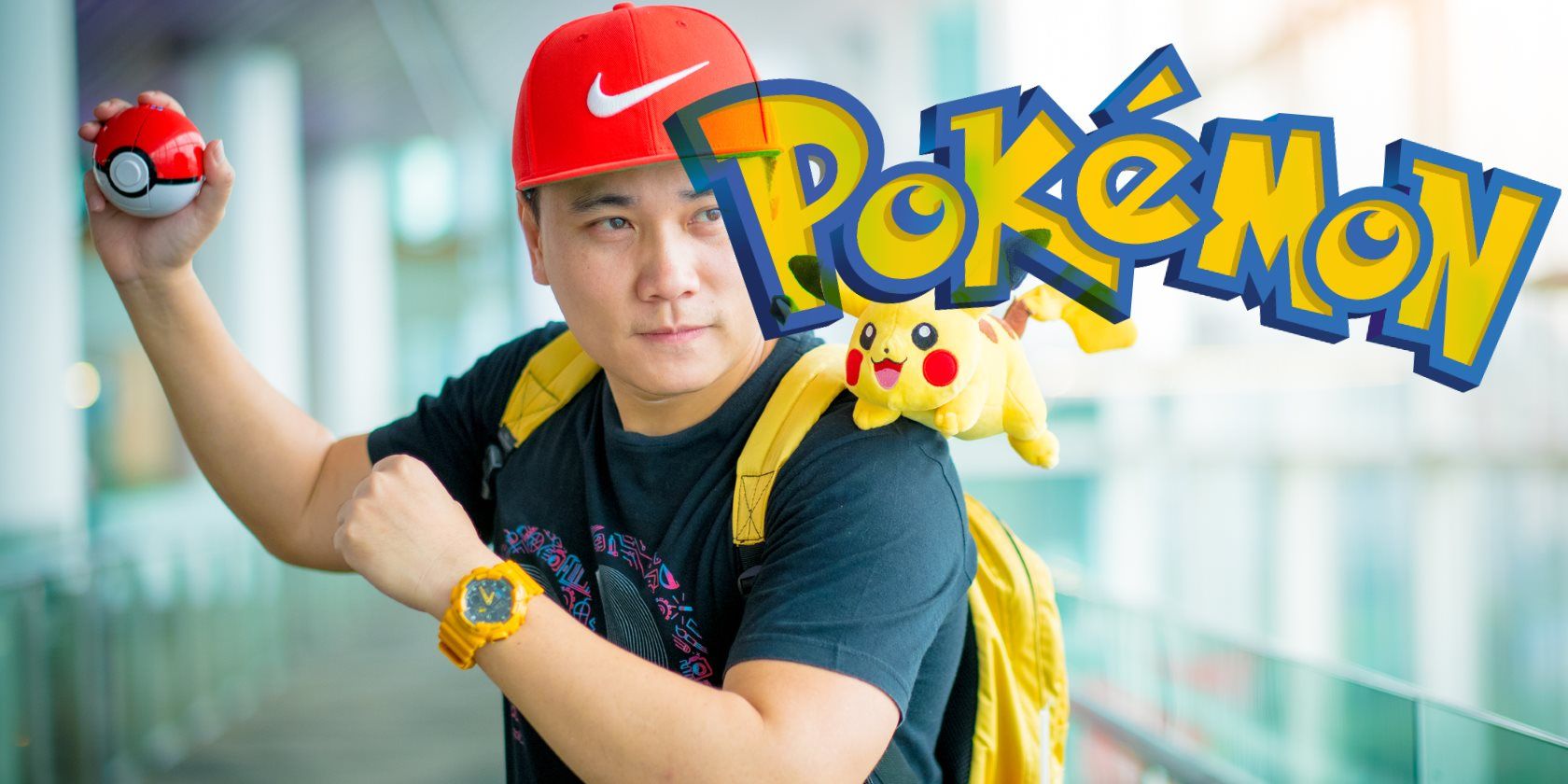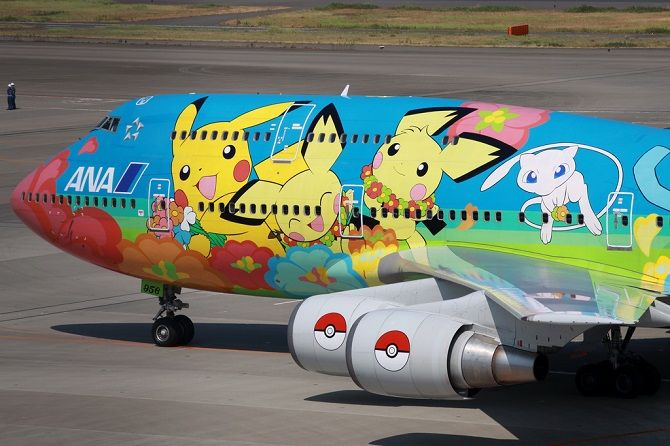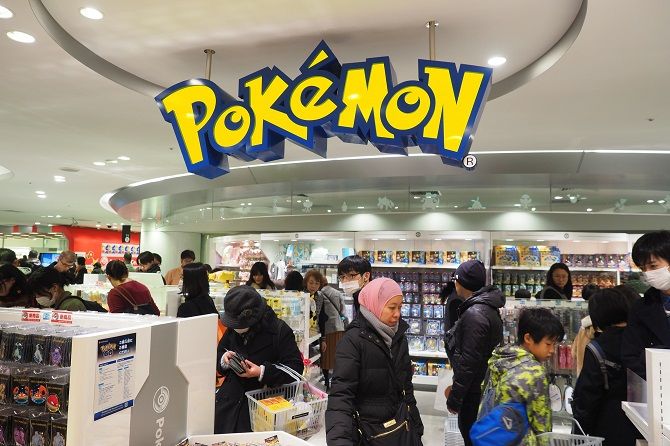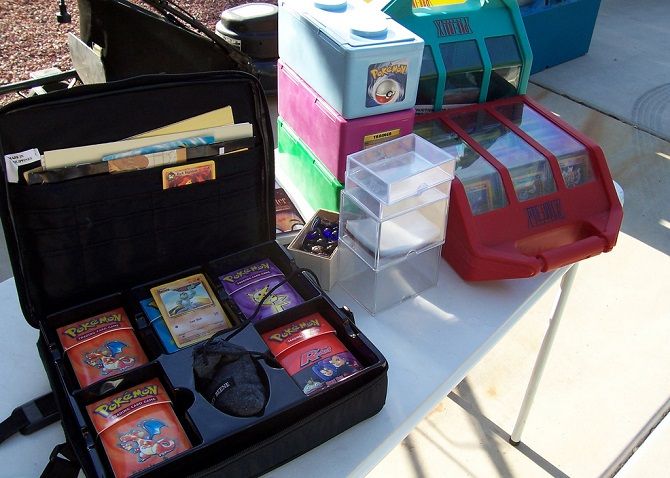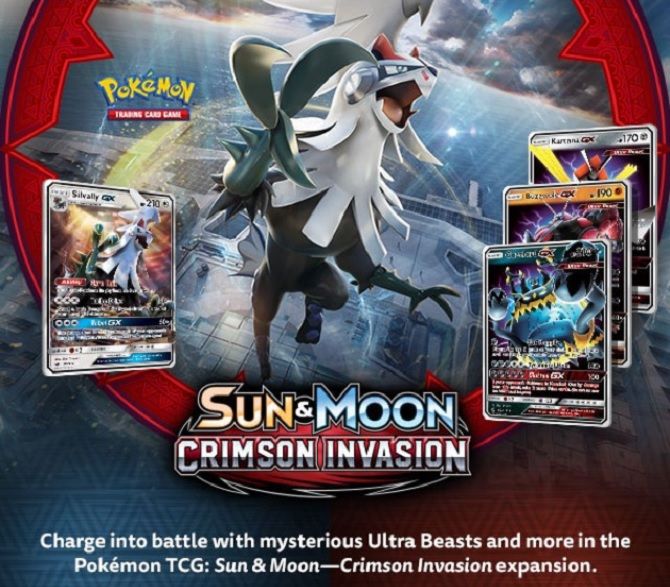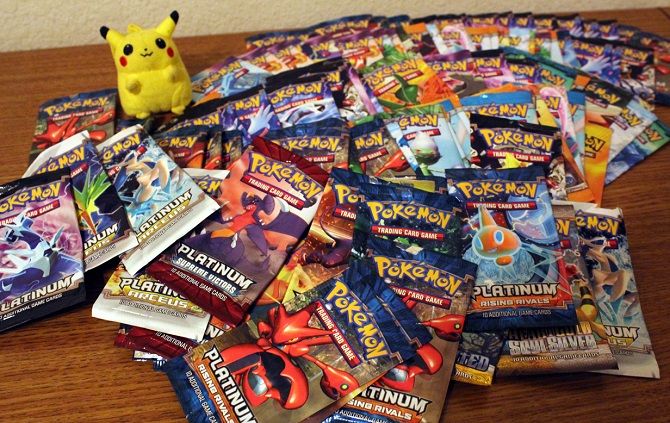Never underestimate Pokémon. What began as a pair of Game Boy cartridges has grown to become the second best-selling video game franchise of all time, just behind Super Mario.
By expanding into TV, trading cards, smartphone gaming, film, andemul manga, Pokémon further claimed the crown as the highest-grossing media franchise ever. Total revenue, as of early 2017, dwarfed $55 billion.
Here's a comparatively brief history of the global phenomenon best known for a yellow electric mouse named Pikachu.
Where It All Began
You may already know that the word Pokémon is the contracted form of "Pocket Monsters", or "Poketto Monsuta" in its original Japanese. But did you know that it began under a different name, and nearly drove developer Game Freak to bankruptcy? Let's explore the genesis of a cultural phenomenon.
Who Created Pokémon?
Pokémon is the brainchild of Satoshi Tajiri. Born in Tokyo in 1965, he began collecting insects as a child, and wanted to become an entomologist. However, this ambition gave way to his other passion: video gaming. For Tajiri, it all began with Space Invaders, and he spent his teenage years fascinated with the medium.
At the age of 16, he won a contest for an idea sponsored by Sega, and at 17, he began a fanzine called Game Freak, costing ¥300. The best-selling issue of the handwritten magazine turned over some 10,000 copies through doujinshi stores (which sell self-published tomes).
Tajiri met Ken Sugimori through the fanzine, and in 1989, the pair turned Game Freak into a video game development company. In that same year, they released their debut title, Quinty, through Namco in Japan, then through Hudson Soft in North America as Mendel Palace.
In 1991, they worked with Nintendo to distribute puzzle game Yoshi, but by then, Tajiri was already concocting an idea that would eventually be known as Pokémon.
Troubled Development
Satoshi was inspired first by his childhood love of insect collecting, then by the Game Boy's link cable. This allowed players to compete against one another, but Tajiri's idea relied on it instead being used to trade. He told Time Asia:
"Places to catch insects are rare because of urbanization. Kids play inside their homes now, and a lot had forgotten about catching insects. So had I. When I was making games, something clicked and I decided to make a game with that concept. Everything I did as a kid is kind of rolled into one -- that's what Pokémon is. Playing video games, watching TV, Ultraman with his capsule monsters -- they all became ingredients for the game."
Ultraman was a TV show that aired in 1966 and 1967 and featured giant monsters contained within small capsules. As such, Pokémon was originally named Capsule Monsters, but was later altered for copyright reasons -- first to CapuMon, then Pocket Monsters.
By this time, it had gained the attention of Nintendo's Shigeru Miyamoto (who was particularly impressed with Ken Sugimori's designs) and was greenlit.
However, the process was long and costly: the first pair of games took six years to create, and Game Freak came near to bankruptcy. The company lost several members of staff and those remaining worked unpaid for a considerable duration.
In retrospect, those seemingly-unrewarding hours were worth it. That might not have been the case if it weren't for Programmer and Monster Designer Shigeki Morimoto, however.
The Creation of Mew
Only 150 Pokémon were planned for the original titles.
Shortly before their release, the games went through a debugging process and staff were instructed not to further tamper with them. Yet debugging had freed up 300 bytes, just enough space for an additional surprise.
Morimoto created Mew, the 151st Pokémon, as something of a gaming Easter egg for his peers at Game Freak. This Psychic-type monster was supposed to only be obtainable by those working for the developer. Morimoto since confirmed:
"Unless we could think about any good opportunity to do so, the existence of Mew wouldn’t have been revealed to the public. It was left in there in case it was suitable for some post-launch activity. But if there wasn’t anyone among ourselves who wanted to use it, I thought it would be fine to just leave it as it was."
Pokémon Red and Green were released on the Game Boy in Japan on February 27, 1996. They resulted in respectable but unremarkable sales -- until a glitch caused Mew to appear in a limited number of games.
Suddenly, rumors of a hidden Pokémon abounded, causing a stir in the gaming community. Sales swiftly increased.
These were encouraged by Game Freak via CoroCoro Comic, which ran a competition for 20 winners to have the Mew game data added to their cartridges. There were some 78,000 entries. For many years, this mythical rarity was obtainable solely through official distribution events.
It was totally unplanned, but Mew had saved Pokémon.
The Main Game Series
You know the story. A youngster is determined to become a fully-fledged Pokémon Trainer, catch 'em all, and collect gym badges. He or she heads off to collect a starter monster, and while doing so, finds a rival Trainer. The pair go forth to achieve their destinies, and further encounter a team of ne'er-do-wells intent on world domination.
Such a description, of course, ignores the natural charm and intrigue of playing Pokémon: a tried-and-tested formula that never really gets old. The Pokédex has expanded to include over 800 Pokémon across seven generations of games.
Generation I
Pokémon Red and Green officially launched the whole franchise.
The player had to voyage across the Kanto region to collect Pokémon. Their ultimate goal was to compete against Gym Leaders to earn badges, and subsequently challenge the Elite Four. You also took on Team Rocket, and generally had fun.
Starter Pokémon: Bulbasaur, Charmander, Squirtle, and Pikachu (in Pokémon Yellow).
Legendary Pokémon: Articuno, Zapdos, Moltres, and Mewtwo.
Mythical Pokémon: Mew.
After Mew's distribution made Pokémon a success, sales were solid enough for Game Freak to issue a follow-up special edition, Pokémon Blue, featuring enhanced artwork and dialogue.
International releases followed between 1998 and 1999, but the team reprogrammed Green. Thus, Pokémon's launch titles in foreign territories were Red and Blue.
After the popularity of the Pokémon anime, Pokémon Yellow followed in 1998 (in Japan), 1999 (North America), and 2000 (Europe). This more closely resembled the TV series. Notably, the player receives a Pikachu as a starter Pokémon, and Team Rocket includes their TV-screen counterparts, Jesse and James.
You can still play these games today by using Pokemon emulators on Android.
Generation II
From the inclusion of unknown creatures in the anime, it was clear that Pokémon wasn't going to stop at the first generation of titles. More specifically, at the end of the first episode, screened in 1997, Ho-Oh was seen flying in the sky.
This pre-empted the 1999 Japanese release of Pokémon Gold and Silver. These were released in October 2000 in North America and Australia, and April 2001 across Europe on the Game Boy Color.
Starter Pokémon: Chikorita, Cyndaquil, and Totodile.
Legendary Pokémon: Raikou, Entei, Suicine, Ho-Oh, and Lugia.
Mythical Pokémon: Celebi.
Similar to Blue, Pokémon Crystal came out shortly afterwards, with improved animation, design, and new subplots. For the first time, players could choose the gender of their avatar too.
These continued the massive success of the franchise, selling 1.4 million units in the USA to become the fastest-selling game ever at the time. An estimated 29.49 million copies have sold in total.
Generation III
Pokémon had reached a peak, and interest was beginning to wane. Nonetheless, Pokémon Ruby and Sapphire proved commercially and critically successful. They were released on the Game Boy Advance (GBA) in Japan in 2002, and in other territories the following year.
Starter Pokémon: Treecko, Torchic, and Mudkip.
Legendary Pokémon: Groudon, Kyogre, Regice, Registeel, Regirock, Latias, Latios, and Rayquaza (in Pokémon Emerald).
Mythical Pokémon: Jirachi, and Deoxys (in Pokémon Emerald).
The "special edition" title, Pokémon Emerald, (out in 2004 in Japan, and 2005 elsewhere) further introduced the legendary Rayquaza, and added story elements to lengthen the journey through the region of Hoenn.
However, before Emerald, Game Freak released FireRed and LeafGreen as part of Generation III, widely available in 2004. These were remakes of the original Kanto-set titles, albeit with added gameplay features and superior graphics, and were similarly well-received.
Generation IV
Pokémon Ruby and Sapphire, plus FireRed and LeafGreen, had sold respectfully. But their DS successors, Pokémon Diamond and Pearl, exceeded expectations.
Reacting to the negative press from Generation III, Diamond and Pearl were designed to take full advantage of the DS' capabilities. You could transfer monsters caught on the previous titles due to the DS's slot for Game Boy Advance games, for example. These were also the first games in the franchise to include 3D elements, though in a limited capacity.
Starter Pokémon: Turtwig, Chimchar, and Piplup.
Legendary Pokémon: Uxie, Mesprit, Azelf, Dialga, Palkia, Giratina, Cresselia, Heatran, and Regigigas.
Mythical Pokémon: Manaphy, Phione, Darkrai, Shaymin, and Arceus.
This generation was set in the Sinnoh region. An enhanced version, Pokémon Platinum, was later rolled out in 2008 and 2009. This also included legendary trios from previous games, including Articuno, Zapdos, and Moltres.
Generation IV came to a close with the 2009/10 remakes of the Generation II titles, Pokémon HeartGold and SoulSilver.
Generation V
Pokémon Black and White took players to Unova. For the first time, the game's world inspiration was taken away from Japan. Whereas previous regions had been modeled on Hokkaido, Kansai, and Kyushu, Unova was based on New York City.
These featured 156 new Pokémon, but some reviewers criticized the new character designs. Fortunately, sales weren't hurt, firmly putting the pair in the top ten best-selling DS games of all time.
Starter Pokémon: Snivy, Tepig, and Oshawott.
Legendary Pokémon: Cobalion, Terrakion, Verizion, Tornadus, Thundurus, Landorus, Zekrom, and Reshiram.
Mythical Pokémon: Victini, Keldeo, Meleotta, and Genesect.
Instead of issuing a special third edition, Game Freak released direct sequels in 2012, nearly two years after the Japanese originals. This time-jump was echoed in the narratives.
Generation VI
Just a year after Pokémon Black 2 and White 2, the franchise was back and fresher than ever.
It would be fair to say that Pokémon X and Y were something of a revolution in the brand's history. Not only did they add 72 more Pokémon to the Pokédex, but the titles introduced numerous exciting features like Mega Evolution, Sky Battles, and increased online connectivity.
In June 2017, they became the best-selling games on the 3DS, selling some 16.15 million units.
Starter Pokémon: Chespin, Fennekin, and Froakie.
Legendary Pokémon: Xerneas, Yveltal, and Zygarde.
Mythical Pokémon: Diancie, Hoopa, and Volcanion.
These new features were also used in the remakes of the Generation III titles, Pokémon Alpha Sapphire and Omega Ruby (2014). They also saw the debut of Primal Reversion for the legendary Groudon and Kyogre.
Generation VII
Pokémon Sun and Moon celebrated Pokémon's 20th anniversary last year, and sold more than 10 million copies worldwide in a week. They stand as the second best-selling 3DS games as of June 2017, though they're expected to overtake X and Y soon.
Starter Pokémon: Rowlet, Litten, and Popplio.
Legendary Pokémon: Silvally, Tapu Bulu, Tapu Fini, Tapu Koko, Tapu Lele, Cosmog/ Cosmeom, Solgaleo, Lunala, and Necrozma.
Mythical Pokémon: Magearna, and Marshadow.
The games overhauled the narrative, added new battling and training dynamics, and established backwards compatibility with X, Y, Alpha Sapphire, Omega Ruby, and the Virtual Console versions of Red and Blue. Pokémon Ultra Sun and Ultra Moon, the enhanced remakes of Sun and Moon, released in November 2017.
Spin-Off Appearances
Pokémon's popularity means that the series isn't confined to one video game series.
The first, however, now seems ridiculous: Pokémon Trading Card Game was a Game Boy Color simulation of the real-life trading cards. It was released between 1998 and 2000, and proved a huge hit -- perhaps owing to the fact it included the majority of cards from the first three sets. It was a one-off cost, eliminated the need to scout out spares, and yet remained addictive, so sold over 1.5 million copies in North America in a year.
A follow-up was soon unveiled, Pokémon Card GB2: Here Comes Team GR!, although only in Japan.
The number of spin-off media for Pokémon far outweighs those of the main series. So we won't waste time recounting the thrills of Learn with Pokémon: Typing Adventure, Pokémon Picross, or Pokémon Trozei!/Link!. Instead, we'll focus on the ones you care about.
Nintendo 64
You've no doubt fond memories of the Nintendo 64 (N64), and might try out Nintendo 64 emulators to get that nostalgic fix. Indeed, your warmest recollections might be of three Pokémon entries -- Hey You, Pikachu!, Pokémon Snap, and Pokémon Stadium.
The former came with a Voice Recognition Unit (i.e. a grey unit and accompanying microphone) to allow players to speak to Pikachu. It was one of only two N64 games to utilize this capability, the other being the Japan-exclusive train-driver simulation, Densha de Go! 2 Kosoku-hen.
It took its inspiration from the Generation I titles, situated in Pallet Town with Professor Oak. You adopt Pikachu as a virtual Tamagotchi-like pet and carry out missions through three levels of difficulty. The Pokémon could recognize around 200 phrases, but gameplay was somewhat hampered by the electric mouse not always reacting quickly enough. Hey You, Pikachu! was released in 1998 in Japan, and 2000 in North America -- but nowhere else.
Pokémon Snap, meanwhile, had a wider reach, rolling out across Japan, North America, Europe, and Australia in 1999 and 2000 (and subsequently on the Wii and Wii U's Virtual Consoles in 2007 and 2016/17 respectively).
The concept was simple. You're a photographer aiming to take pictures of as many Pokémon as you can. This isn't about catching; it's purely the thrill of seeing the monsters in a 3D-like environment.
If Pokémon Snap was about exploration, Pokémon Stadium swung the other way: battle. In 1998, Stadium was released in Japan only; it wasn't until 2000 that a more complete version was available to other territories.
You could either "rent" Pokémon, or transfer ones you caught in Pokémon Generation I. As an incentive to use the latter, winners of the Gym Leader Castle mode would be rewarded with a rare Pokémon, like Hitmonlee, Eevee, or Omanyte.
Fighting Games
Considering battle is one of the touchstones of Pokémon, it comes as no surprise that a few spin-offs center on this aspect.
The closest the franchise has got to emulating Pokémon Stadium is with Pokkén Tournament. And yet it's a relatively recent game.
It began as an arcade title in Japan in 2015, first as a demo then the full game. A port was revealed for the Wii U the following year, and then, in 2017, as Pokkén Tournament DX for the Nintendo Switch.
Fights alter between Field Phase, with fully-3D surroundings, and Duel Phase, which switches to a 2D environment and alters the controls. At least 16 Pokémon are playable, although more are exclusive to either the arcade or Switch versions. It's also the only Pokémon game so far to use its original Japanese title for international release -- which is pretty neat!
Pokémon is so ingrained in gaming culture that the creatures have begun to crop up in other titles too. The most notable of these is the Super Smash Bros. franchise, beginning with the debut N64 game.
Pikachu stars in every Smash game with Jigglypuff showing up in three of the four titles. Pokéballs are usable items that unleash various other creatures to inflict damage for a limited period. For the GameCube's Melee, Pichu and Mewtwo joined the roster, but they were absent from the Wii's Brawl. In their place came Lucario and a Pokémon Trainer.
In the most recent versions -- on the Wii U and 3DS -- you can play as Pikachu, Charizard, Lucario, and Greninja, while Mewtwo also returned as DLC.
As is the nature of Super Smash Bros., the Pokémon battle against characters from other major brands, including Mario and Luigi, Link and Zelda, and the titular character from the Star Fox series.
Mystery Dungeon
As the longest-running series bearing the company name, the Pokémon Mystery Dungeon games are arguably the best-known handheld spin-off.
But it wasn't originally a Pokémon title. The Mystery Dungeon franchise began in 1993 as a turn-based strategy idea where players must explore dungeons. It's akin to chess, where the player makes a move (even just walking) and then so does the antagonist.
In 2005, this got an additional twist as Pokémon fronted the Red Rescue Team and Blue Rescue Team. The player answers a set of questions at the start and this determines the monster he or she turns into.
Though you can only play as a select few species, each title contains a vast wealth of Pokémon. The most recent in the range, Pokémon Super Mystery Dungeon for the 3DS, includes all 720 Pokémon available at the time of its 2015 Japanese release.
Pokémon Go
As part of the 20th anniversary celebrations, everyone embraced Pokémon once more, as Pokémon Go was unleashed onto the world (our best tips for playing Pokemon Go).
Finally, the generation that began collecting Pidgeys, Nidorans, and ever-elusive Abras in Red and Blue could take to the streets and discover Pokémon in the wild. Using a smartphone's camera, Go takes advantage of augmented reality (AR) to place Generation I creatures in your kitchen, garden, and city centers.
Of course, it proved controversial too. Everyone was staring down at their devices (more so than usual). Some had treated themselves to malware by downloading fake versions. And there was the question of what developer Niantic was doing with your private details.
Folk of all ages adopted it. Heck, there was even a rush to get to Central Park in New York City to catch a Vaporeon!
Yes, you've probably caught numerous Eevees and evolved them by now, but in the early days, a freak sighting like that was special.
Updates followed, including the addition of Generation II Pokémon. Generation III has begun to roll out as well, though it won't fully take effect until 2018.
Forgot those comments that call it dead. Players have downloaded it an estimated 750 million times since July 2016, with a total revenue of $1.2 billion as of mid-2017. Pokémon Go is a success story.
Trading Card Game
Until now, we've glossed over a key component in Pokémon's story. The Trading Card Game (TCG) has been an essential part of the franchise since 1996, and remains a popular tabletop game today.
A Beginner's Guide
The first sets naturally took inspiration from the Generation I games. They featured art by Game Freak's Ken Sugimori, as well as freelance illustrator Mitsuhiro Arita (whose other work graces the Yu-Gi-Oh! franchise). Rounding out the art team was 3D renderer Keiji Kinebuchi.
The cards were originally made by the Media Factory in Japan, but were distributed worldwide by Wizards of the Coast in 1999. The Base Set wasn't widely sold, so a follow-up became available from mid-2000.
In its simplest terms, each player starts with a 60-card deck, with a mixture of the three card types. The first is obviously Pokémon. Trainer cards and associated Energy cards for attacking support these.
Energy cards depict a 3D symbol against a base color. Trainer cards feature an illustration against a metallic-like background, complete with individual instructions. The Pokémon come with more details. These are headed by the Pokémon name and Hit Points (HP), and typically cite two attacks, plus numerical effectiveness.
A short biography sits at the bottom of each card, alongside level, Pokédex number, and symbols determining rarity. Cards come in four basic denominations: Common, Uncommon, Rare, and Ultra Rare.
And while there were many who did enjoy the strategy game, its complexity meant the TCG immediately became more of a collecting phenomenon . This was no doubt egged on by the classic catchphrase, "Gotta catch 'em all!"
While it was originally possible (if extremely difficult) to obtain complete base sets, the explosion of expansion packs means it's better to specialize. New sets and expansions have arrived every year since their initial release, totaling 76 in English at the time of writing. A 77th, Ultra Prism, is expected in February 2018.
The TCG Pokémon League
As you will expect from a card strategy game, tournaments take place on a regular basis.
Of course, smaller unofficial trading events also occur, but the League is a division organized by The Pokémon Company. Competitors register to get a Play! Pokémon Player ID, and have records listed on Pokémon's official website. These include games played, rankings, and a score system named Premier Ratings.
There are currently three categories: Junior Division, for those born in 2004 or later; Senior Division, for anyone born between 2000 and 2003; and Masters Division, consisting of players born in or before 1999.
Local Tournaments generally occur weekly, for fun, and as a means of practice. However, these can lead to larger events with prizes often including rare/exclusive cards. Some have monetary recompense, with the winner of 2016's Internationals earning a cool £500,000 (about $658,000).
Controversies
It's only natural that such a prominent recreational event draws some criticisms, although the negativity the TCG garnered in its early years may surprise you.
Its popularity at schools caused initial concerns, as some institutions banned the cards fearing them a distraction from studying. Others saw trading and the buying of expansion packs akin to gambling.
Far more troubling were the claims that Pokémon contained demonic imagery. Pikachu was singled out for having a "Satanic Z" for a tail. No, really. Art on the original Japanese version of Koga's Ninja Trick underwent changes for international editions as it featured the omote manji, a reversed swastika. Jynx attracted criticism for being racist.
The strangest disagreement, however, came over Kadabra. Uri Geller, who claims to be a psychic able to bend spoons with his mind, filed a lawsuit against Nintendo, believing that the character was an occult subversion of himself. Specifically, thanks to the star on its forehead and the electric on its torso resembling an SS logo, Geller viewed Kadabra as anti-Semitic.
Kadabra hasn't been included in any TCG sets since 2003, though the lawsuit was unsuccessful.
Anime
The Pokémon anime premiered in Japan in April 1997 and more widely the following year.
It airs in 98 countries, but its reach is far greater thanks to the availability of anime on Netflix. While Japan has the greatest selection to stream, episodes from different seasons (plus occasional movies) are available worldwide, including four seasons in America and one for the UK.
The show splits into six seasons with arcs roughly reflecting game journeys. It starts off in Kanto and progresses to the Orange Islands -- the only region exclusive to the anime -- then Johto, Hoenn, and so on. Due to their length, those six are further divided into over 20 seasons outside Japan.
Indigo League and the Orange Islands
In Pokémon -- I Choose You!, we meet Ash Ketchum (originally Satoshi) as he turns 10 and heads off to become a Pokémon Trainer. A late start means he doesn't get a traditional starter, but instead is partnered with a Pikachu. This is echoed in Pokémon Yellow.
Soon, he's joined by Misty and Pewter City Gym leader, Brock, as they venture into Kanto and fight off the villainous Team Rocket.
The Pokémon League is spread across 80 episodes, although some have been banned or remain unaired outside their native country.
Beauty and the Beach has been in and out of circulation (and some scenes cut) after a member of Team Rocket, James, dons an inflatable suit with large breasts. Episode 35 (roughly translated as The Legend of Dratini) included handguns, and Holiday Hi-Jynx was deemed racist.
The best-known unaired episode, however, is Episode 38, colloquially known as the "seizure episode". The plot focused on Porygon, and featured an infamous scene with flashing lights; over 680 Japanese children were rushed to hospital after displaying signs of epilepsy. Porygon and its evolutions are rarely seen in subsequent episodes of the anime, fearing association with this incident.
This first season continued to the Orange Islands, running to another 36 episodes.
Johto and Beyond
With the new millennium around the corner, Ash gained more independence as he discovered regions beyond Kanto.
With Don't Touch That 'dile, he, Misty, and Brock began their quest in Johto and soon encountered creatures from Pokémon Gold and Silver. The vast majority of these went into international circulation, apart from Episode 250 as it prominently featured Jynx.
Totaling 276 episodes, these stories bring the original arc to a close. Ash has left all his Kanto Pokémon behind aside from Pikachu. In Gotta Catch Ya Later!, Brock returns to Pewter City, and Misty once again sits as the leader of the Cerulean Gym. Fortunately, in the next episode, Hoenn Alone!, Ash decided to carry on his adventures in other regions.
The subsequent Advanced Generation arc consists of 192 episodes, and Ash meets new friends like May and Max. Fortunately, we do also catch up with Misty and Brock. The adventures continue for 193 episodes as Diamond and Pearl, into Best Wishes! (142 episodes, spread across four chapters), and X and Y (140 episodes).
Sun and Moon is airing now -- and the anime has now passed the milestone 1,000th episode!
Movies
Obviously, no coverage of the anime would be complete without talking about the animated movies.
Pokémon: The First Movie -- Mewtwo Strikes Back premiered in Japan in 1998. An updated version (with better animation, graphics, and a prologue) came along a year later. The core feature runs 75 minutes and tells the story of Mew and Mewtwo, the final two Pokémon of the original Pokédex. The prologue added an origin story for the latter, establishing Mewtwo as an experimental clone -- a living weapon.
With a $30 million budget, it proved a commercial (if not critical) success, raking in over $160 million worldwide.
This guaranteed further movies in the series. In fact, Pokémon: The Movie 2000 was out the following year, introducing Lugia to the anime mythos. Though this proved slightly less successful than Pokémon's debut cinematic outing, it nonetheless more than justified its $30 million budget.
Every film in the franchise features legendary Pokémon, and acts as a way of establishing new monsters from each game. None were especially well-received by critics, but fans still clamor for more -- pretty impressive considering these are glorified advertisements for the video games and TCG. (That's not a criticism: look at how popular Transformers is!)
Fortunately, the 20th (and most recent) movie in the series, Pokémon the Movie: I Choose You!, largely bucked the trend of negative reviews. But old-school fans took issue with this retelling of the early years of the Pokémon anime, specifically that Misty and Brock were completely excluded from the narrative.
Manga
Lovers of digital comics will be pleased to know that there are extensive Pokémon stories in comic and graphic novel format.
The chronicled events take place in their own continuity, removed from that of the anime. On one hand, audiences can pick up the first volumes of manga titles without having experienced Pokémon in other mediums. But on the other, it can put dedicated fans on the backfoot to see tales retold.
Although you can only find the majority of these manga titles in Japan, there are a few series available elsewhere.
Pokémon Adventures
This is by far the best-known and most successful manga series sporting the brand's name.
Pokémon Adventures is also the most respectful to its source material. It largely charts the journeys of Red, the original protagonist in the Generation I Pokémon games. It doesn't follow that narrative exactly, though. For example, Red's first Pokémon was Poliwhirl, instead of Bulbasaur, Charmander, or Squirtle.
Written by Hidenori Kusaka, Mato established the look of the series in 1997 and illustrated the first nine volumes. But an illness that left her hands weak forced her to relinquish the title to Satoshi Yamamoto -- who continues as the series' artist to this day.
Pokémon Adventures has sold over 150 million copies across its 53 collective books (plus mini-volumes charting the Black & White, X & Y, and OmegaRuby & AlphaSapphire plots), making it the seventh best-selling manga in the world, behind such titles as One Piece, Naruto, and Case Closed.
Best of Pokémon Adventures was awarded Favorite Manga Series in the first Nickelodeon Comics awards (2009). In 2016, Yamamoto and Kusaka won the Comic-Con International's coveted Inkpot Award. Yet the greatest accolade must surely come from Pokémon creator, Satoshi Tajiri, who said:
"This is the comic that most resembles the world I was trying to convey."
The Electric Tale of Pikachu
This four-volume set is something of an oddity.
It's an adaptation of the anime. Except the plot deviates, situations are more adult, and the art is more stylized. It garnered a wide audience thanks to its serialization in CoraCora magazine, early supporters of the franchise.
The series was released in English by VIX Media under four distinct arcs: The Electric Tale of Pikachu; Pikachu Shocks Back; Electric Pikachu Boogaloo; and Surf's Up, Pikachu. Samplers were initially issued with VHS releases of the anime, then subsequently across 16 issues between 1998 and 2000.
The Electric Tale of Pikachu is one of the most controversial Pokémon stories ever, and was heavily censored for audiences outside Japan. The most conspicuous element is its sexualization of women, especially Misty. In one particularly explicit scene, Ash and Brock are caught snooping on a naked Misty as she showers in a hot spring. Misty also battles Ash at the Cerulean Gym while wearing a revealing swimsuit.
2017 and Beyond
What's the secret to Pokémon's success? Whatever the medium -- video game, TCG, anime, or manga -- the one uniting factor seems to be a respect for the past while simultaneously looking to the future. In the same vein, eager fans have even created their own Pokémon fan games.
That much is evident just from Pokémon Ultra Sun and Ultra Moon, which take Sun and Moon's ingenuitive gameplay and enhances it with kisses to the franchise's history. Namely, it includes all previous legendaries, and Team Rainbow Rocket (led by original boss, Giovanni).
What does the future hold? 2018 will certainly see another Pokémon game, this time for the Nintendo Switch. The anime continues, of course, as does the TCG. And there's even a live-action Pokémon film planned… you're free to feel as skeptical about that as you want.
Regardless of any projects seemingly doomed to fail, Pokémon has an extremely bright future, building on its considerable past.
What's your favorite Pokémon game? Which medium do you think best fits the concept? Tell us your best Pokémon-related memories in the comments below!
Image Credit: insurecyber/Depositphotos

